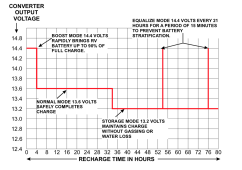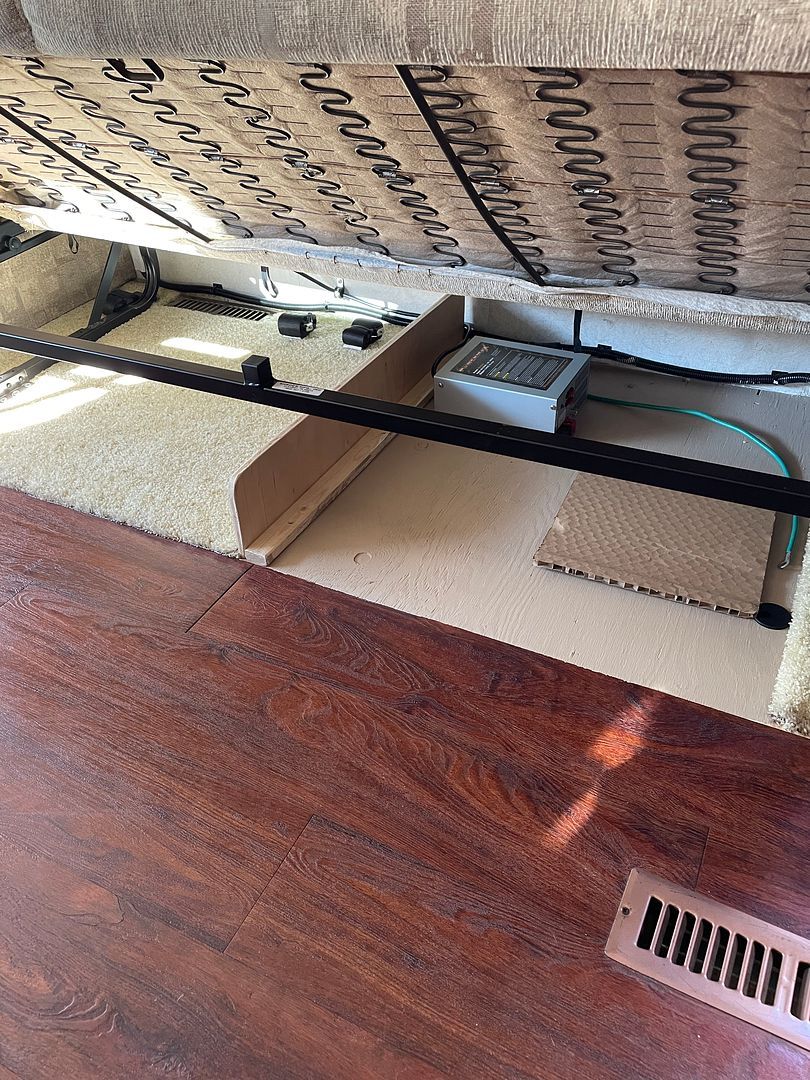20 amp circuits with 12 awg wire for 120VAC receptacles is a fairly recent phenomenon.
I wouldn't count on that.
I thought it was nec code. My fifty year old house is wired that way. All of the plug-in receptacles are on 20A breakers with 12g wire, and the lighting circuits are 15A breakers with 14g wire.
It has a silly little 100A main, but at least it has 20A outlets.
Power factor is not a huge concern for utility power. PF really comes into play with a limited source such as generator or inverter. When the powered device only uses part of the sine wave there needs to be additional apparent power to prevent overload. Converter has low power factor because the electronics are not designed to synchronize with the sine wave to use the full curve.
http://www.xantrex.com/documents/Power-Inverters/PROsine/MS20070214_pfc-whitepaper02.pdf
Does a converter/charger unit pull it's full AC load regardless of output charging amps?
In any case, I'm glad I got the 55A unit. If they had a 45 I would have gotten that.
And based on that PDF, now I know why we've kicked the breaker a couple of times running the genny with the AC on.
Probly had the converter running, AC on, and she started the microwave.






